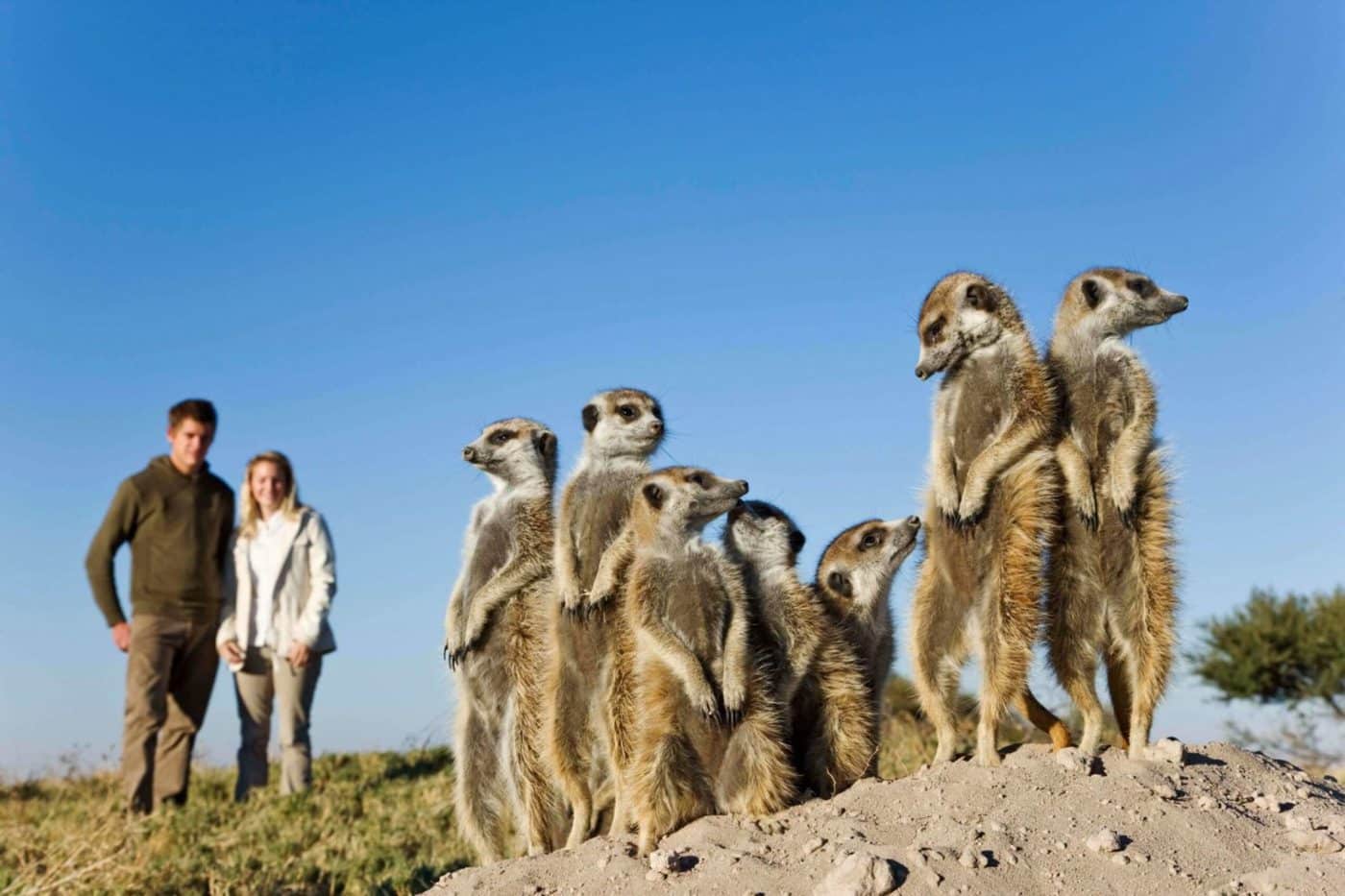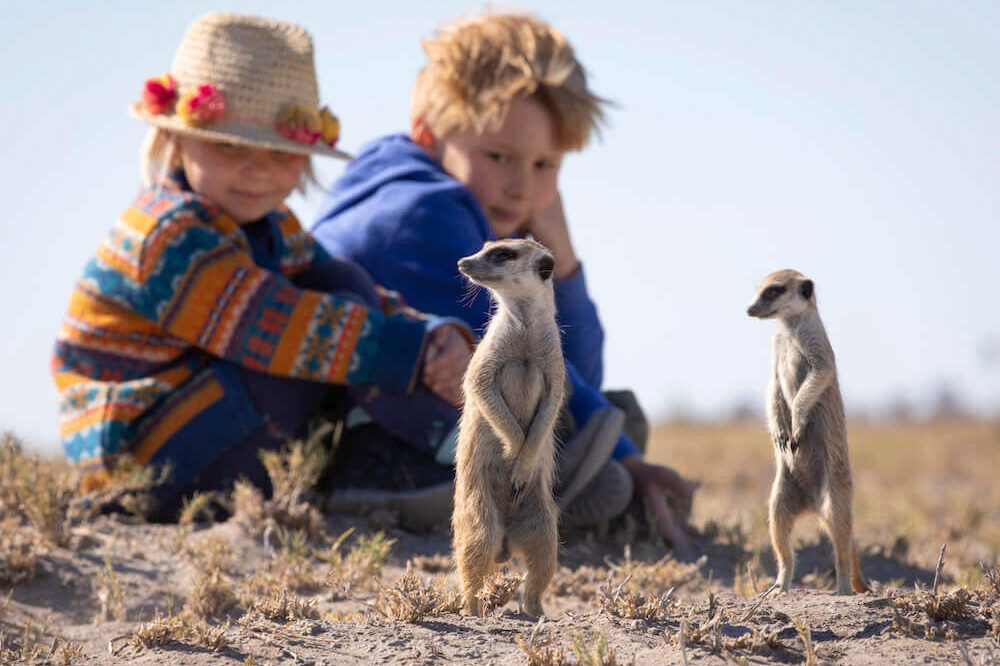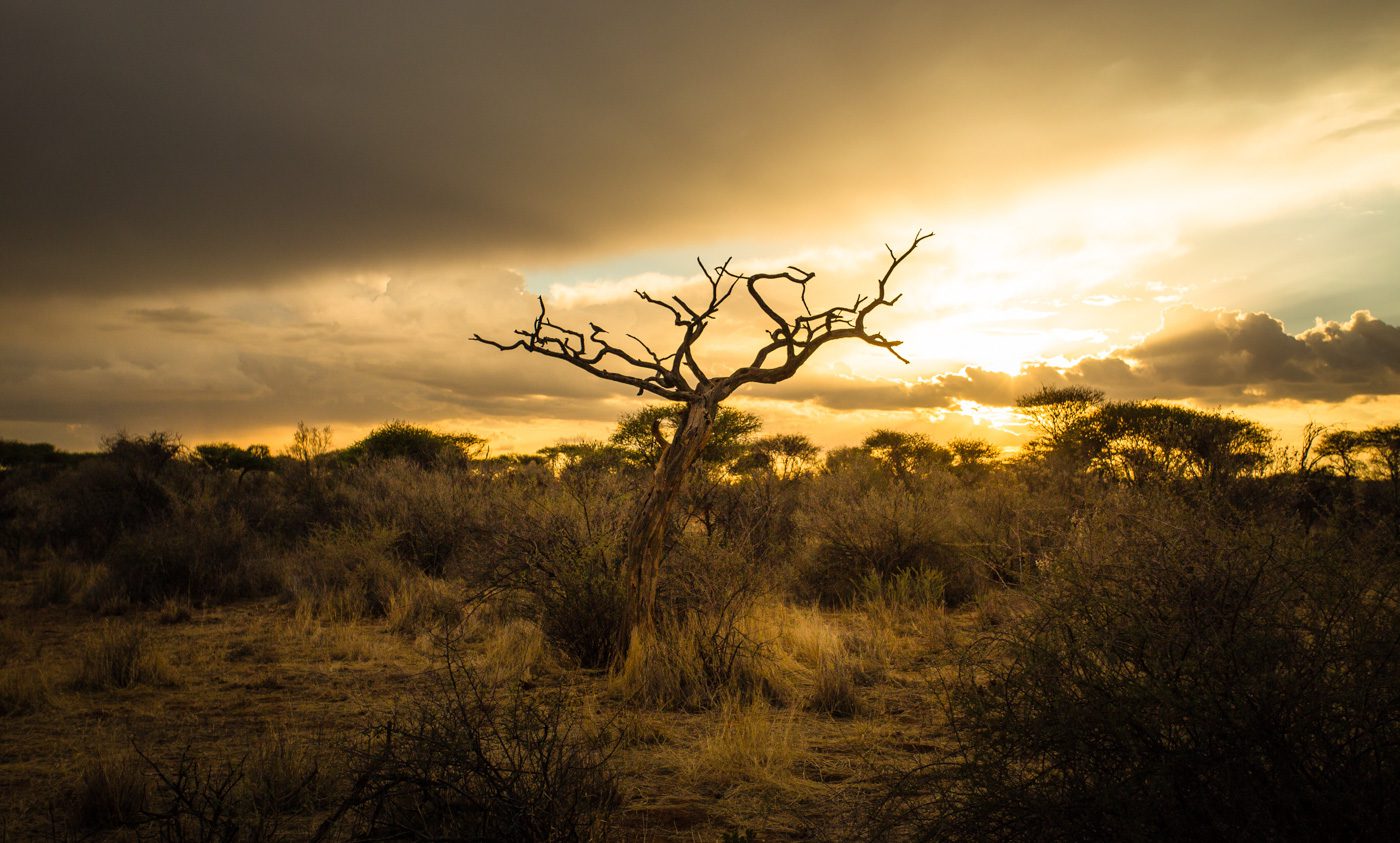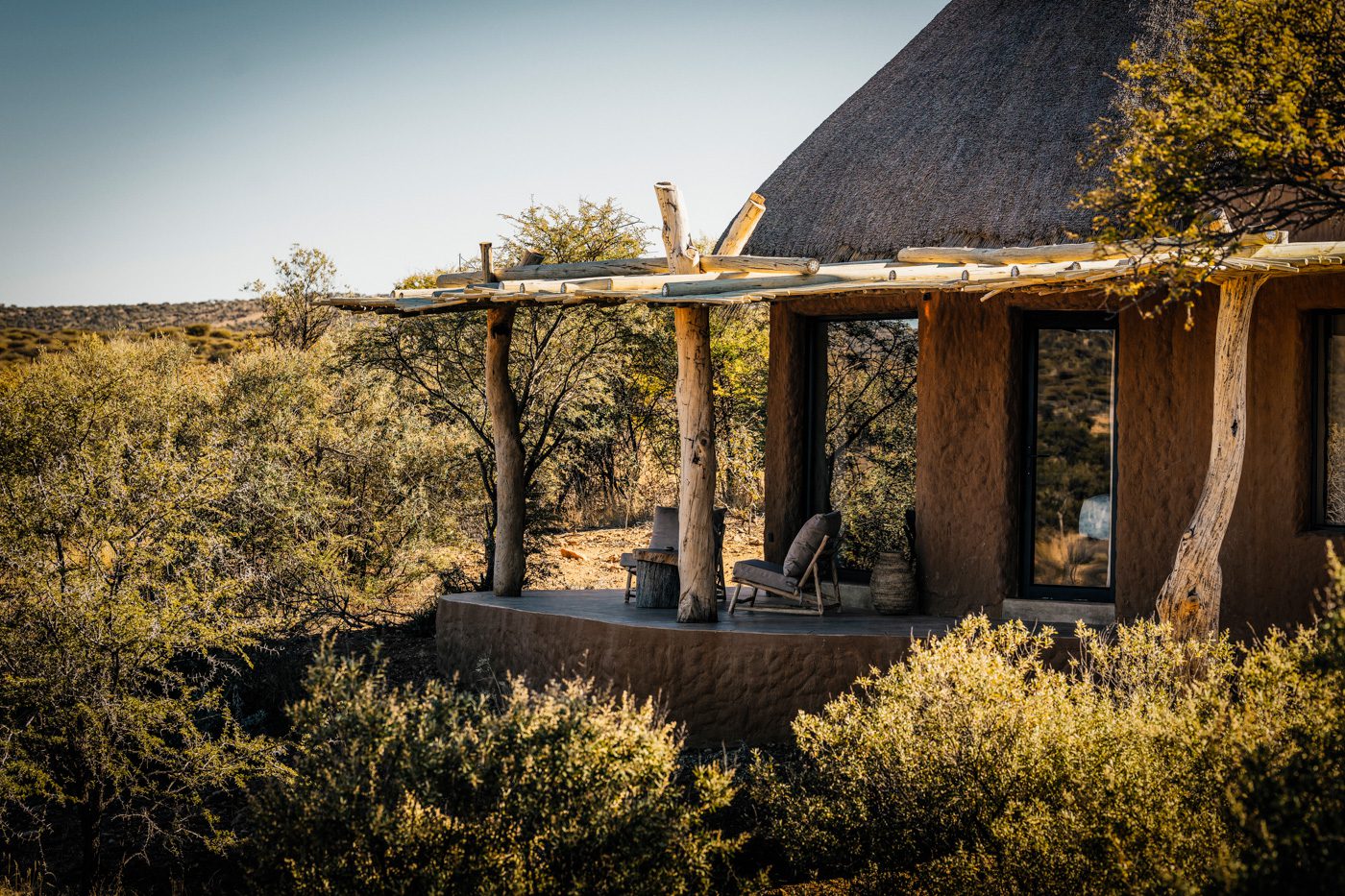CUTE & CURIOUS
The Best Destinations to Find Meerkats
Few African animals are adored quite as much as meerkats.
Children – and children at heart – are drawn to their cheeky, skittish behaviour, their quirky habit of standing tall in constant vigilance and their almost cartoonish appearance. Indeed, meerkats have more than once been immortalised in movies and TV shows, including The Lion King and The Life of Pi.
Supremely intelligent, these communal cousins of the mongoose unite to solve problems at a similar level to chimpanzees, dolphins and even humans. While ferocious hunters, they are loving parents and form crèches within the community or mob, the younger adults caring for infants while the adults hunt and attend to the perpetual sentry duty.
But despite their popularity, there is much about meerkats that is unknown and, though they are categorised as ‘of least concern’ on the International Union for Conservation of Nature’s threatened species list, they can only be found in a few select areas of Africa.
Meerkats are wonderful animals to observe and, though they will swiftly dart into their boltholes at the sight of a soaring eagle or curious jackal, seem to tolerate human presence with indifference.
Adorable though they are, there is much to be admired about the diminutive little meerkat. Lightning-fast and superbly talented hunters, their diet includes poisonous snakes and scorpions and, despite their tolerance and immunity to many venoms, they are rarely stung or bitten.
Estimates suggest that approximately half a million meerkats exist in the wild and, with close communal networks, little threat from humans and few predators that can match their alertness and speed, are likely to continue thriving. But that isn’t to suggest that one is guaranteed to see them on safari.
In fact, their preference for desert climates minimises the opportunity to observe them, confined as they are to just a handful of locations across the entire continent of Africa.
These are the best camps, lodges and locations to visit for your chance to have a meerkat experience:
- Jack’s Camp, Botswana
- Tswalu Kalahari, South Africa
- Under Canvas, Botswana
- Omaanda, Namibia
- Oudtshoorn, Cape Town
JACK’S CAMP, BOTSWANA
A country of two halves, the floodways of the Okavango are far from the meerkat’s natural habitat, but to the southeast of the delta, the Makgadikgadi Salt Pans offer the perfect flat, arid environment for them.
Few mammals live in the pans, but bugs are plentiful, and it is on these that the meerkats thrive. Despite its inhospitality for most creatures, this lunar-like landscape is a fascinating destination for visitors and explorations, sleep-outs and interactions with the resident San people make it distinctly unique.
On the periphery of this barren vista lies Jack’s Camp, a distinctive property of exceptional luxury. Part early colonial camp, part Indian Raja’s tent, Jack’s Camp is a sublime yet almost surreal addition to the landscape.
Photos: ©Jack’s Camp
It also happens to be one of the best destinations for a meerkat interaction.
What makes the camp’s meerkat experience so special is the very nature of its setting. The flat plains offer few elevated vantage points for the meerkats to stand lookout and any raised surface is utilised to the fullest… including visiting humans.
Now, it must be vehemently stated and understood that this is not an opportunity to pet meerkats. They are not habituated or in captivity and, as wild animals, should never be touched under any circumstances. However, with a little patience, it is possible that they may use a visitor’s knee or shoulder as a watchtower. Keeping perfectly still and silent, one may be seen as a log or boulder and scaled accordingly to offer a clear view across the plains.

TSWALU KALAHARI, SOUTH AFRICA
Tswalu features somewhat regularly in our content, largely because – as well as being wonderfully luxurious – it is distinctly unique.
The Kalahari holds the vast majority of meerkat populations, both in South Africa and neighbouring Botswana and Namibia. At Tswalu, the well-known meerkat mob is particularly tolerant of human presence and though far from tamed, has been carefully habituated.
The nature of meerkat habitats often diminishes the range of activities available to travellers, being far removed from other game regions or more abundant ecosystems. Tswalu, however, combines both aspects, its deep orange landscapes scattered with brush and outcrops and providing home to a number of creatures. Many of these other species, including brown hyenas, aardvarks and pangolins, are rarely seen elsewhere, making this a particularly rewarding safari destination.
Game drives, walking safaris and horseback explorations will allow guests to view cheetah, lion and leopard, giraffe, roan, sable, gemsbok, eland, springbok and red hartebeest. By night, the aardvarks and pangolins emerge along with bat-eared foxes and aardwolves.
Though much wildlife will take a little searching, meerkats tend to stay in the same burrows for an extended period, so their whereabouts are always known and invariably guaranteed.
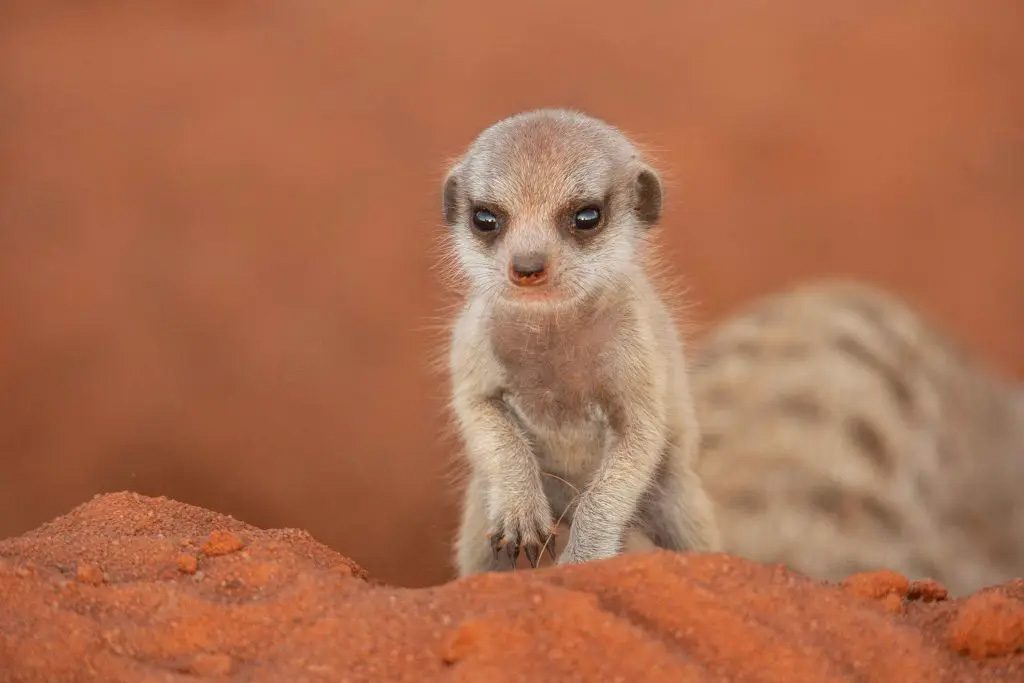
UNDER CANVAS, BOTSWANA
Under canvas mobile camps have the ability to explore far into the country’s less hydrated environments.
From the banks of the Okavango Delta, guests can take an overnight flycamp to the Makgadikgadi Pans. Here they can enjoy cultural connections and explorations of the pans on horseback or quad bike. This enables them to visit the local meerkat families and come face to face with one of the Makgadikgadi’s most resilient inhabitants.
These spontaneous flycamps are able to venture deep into the pans, to meet the meerkats but also to experience the breathtaking remoteness of this extraordinary landscape. By day, the expansive vista presents a dramatic terrain to explore; by night the heavens illuminate in an astral display matched by almost nowhere else in the world.
One of the beauties of exploring the plains in this manner is the level of exclusivity that can be attained. With very few, if any, other visitors, it is possible to spend as long as one wishes with the meerkats, affording exceptional photographic opportunities and the chance to sit and observe, and maybe even to be climbed upon by these adorable locals.
OMAANDA, NAMIBIA
Like the wildlife that has uniquely adapted to this enchantingly desolate landscape, Namibia’s properties are idiosyncratic, juxtaposed with the dramatic dunes and rocky outcrops that rise from the ochre desert floor.
Omaanda seems to emerge organically from the terrain, though the interior offers nothing short of uncompromising luxury. The Zannier N/a’an ku sê Reserve is a carefully-managed private conservancy that is home to protected and threatened species including black rhino and desert-adapted giraffe, elephant and cheetah.
Rising with the sun, guests can take a dawn excursion to the nearby colony of meerkats that emerge in the cooler hours of the day to hunt, socialise and delight visitors before the Namibian sun gets too hot. The meerkats are highly active at this time of day and their animated forms will be found scampering through the desert shrubs in search of berries, insects and docile lizards yet to gain their energy from the sun’s warmth.
As charming and endearing as the meerkats are, they are just one of the wildlife attractions of Omaanda. Taking great responsibility for the ecosystem in which it resides, the lodge is highly active in the region’s conservation efforts, and guests are able to participate in rhino, elephant and carnivore tracking.
Though a spectacular activity in itself, wildlife tracking helps guides monitor the numbers and movement of species, check for sick or injured animals and protect endangered wildlife. It also affords visitors the opportunity to observe and photograph some of Namibia’s most elusive and exquisite creatures.
OUDTSHOORN, CAPE TOWN
Though not a property itself, Oudtshoorn is one of the most convenient locations at which to view meerkats.
South Africa’s southern coastline is wonderfully dramatic, with quaint towns, quiet roads winding along rugged cliffs and secluded, sandy bays to be discovered. The Garden Route, stretching almost 200 miles (300km) to the east of Cape Town is a tranquil yet spectacular way to take in the diversity of landscapes and the spectacular Indian Ocean as it clashes with the Atlantic to the west.
Taking a weekend journey from Cape Town, it is along this wending drive that one can find Africa’s most southerly meerkat colony.
Highly ethical and conscientiously managed, the Oudtshoorn Five Shy Meerkat Tour is open to the public, with up to 20 guests sharing the morning with the habituated mob at any one time.

The one daily visit sets off before dawn, gathering at one of several locations, depending on the colony’s movements overnight. Guests are informed of the protocols in place to protect the wild meerkats, and are then able to sit back and relax in the crisp Southern Cape morning with fresh coffee, to await the emergence of the colony.
As the day warms they appear, and visitors will spend two thrilling hours observing the meerkats’ morning activities and interactions.
The Five Shy Meerkat tour doesn’t possess the exclusivity or wilderness setting of other destinations, though it remains a wild animal experience, the meerkats free to roam and not confined in any way.
What makes this an excellent excursion is its ability to be included in a coastal road trip, and all within a couple of hours of Cape Town, making it incredibly convenient for those seeking meerkats but not able to visit the other, more remote locations.
Though charmingly adorable, meerkats are a small aspect of a larger safari experience and just one checkbox on a far more extensive list of animals to see. Meerkat habitat is often spectacularly unique, so beyond spending your time pretending to be a log in hopes that they might climb on you, there are plenty of valid reasons to visit them. Typically, a meerkat excursion will take about two hours, so will form a small part of a day’s itinerary.
Meerkat populations are often said to be habituated. This is distinctly different from their being tamed, trained or domesticated to any degree. For animals that are poached, habituation can have a highly negative impact, making them easy prey for humans, for whom they develop a disregard. However, meerkats are not poached and their semi-permanent dens lie within stringently protected conservancies.
Their habituation is beneficial in several ways, helping rangers and guides monitor the colony’s health, scientists to research and reserves to benefit from tourist income.
If meerkats – or any of Africa’s wonderful creatures – are on your wishlist, discuss the possibility of visiting their territory with your Travel Designer, who will be able to recommend the best locations and time of year for your itinerary.


